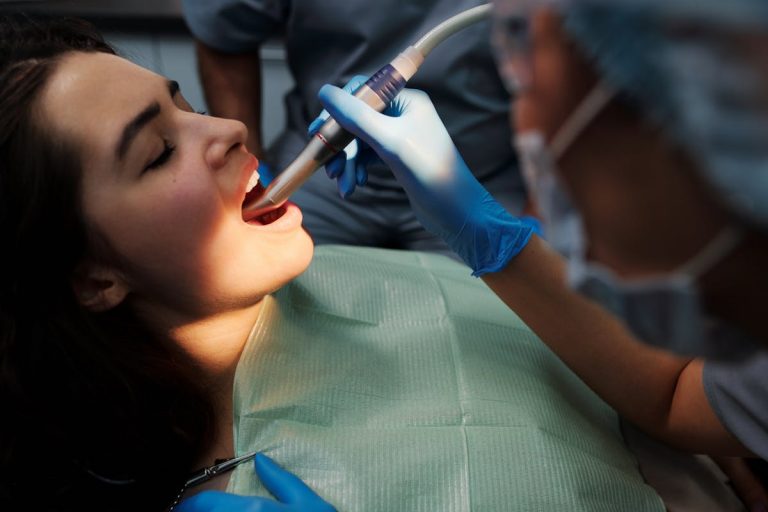Back pain is one of the most common reasons for missed work, with almost 80 percent of adults suffering from it at some point in their lives. For many, back pain can be caused by poor posture or increased physical activity. However, women may experience specific lower back problems unassociated with menopause or pregnancy.
Lower back pain affects both men and women. Still, there are a few specific causes, such as hormonal changes due to pregnancy or menstruation. If you’re experiencing lower back pain, it’s best to rule out anything serious by seeing your doctor first. However, once the doctor has given you the all-clear, there are steps you can take to alleviate your lower back pain. That way, you can get through the uncomfortable times without having to suffer in silence.
Causes of Lower Back Pain in Women
Hormonal changes, especially during menstruation or pregnancy, can cause lower back pain. Although these hormonal fluctuations are normal and should not cause concern, they may result in discomfort. Pregnancy-related lower back pain typically goes away after delivery. Still, it is essential to consult a doctor if you have any symptoms like losing bladder control or extreme difficulty urinating. Hormonal changes can also lead to muscle spasms, contributing to poor posture and chronic back pain. Genetic factors also play a role in causing low back pain among women. Suppose your mother had fibromyalgia or other forms of chronic musculoskeletal disorders when she was young. In that case, there’s a greater chance that you will develop them as well.
How to Know if It’s More Than Back Pain
Do you have pain that radiates down one or both legs? If so, it’s more than likely, not lower back pain. Do you wake up in the morning and find that your back is stiffer than usual? Are there any obvious reasons why your back is acting up? Some back pain may cause other sicknesses like scoliosis or osteoporosis. If you do have those, it’s time to take action.
A healthy diet will ensure your body has everything it needs to support its musculoskeletal system while avoiding nutrient deficiencies that could contribute to pain later on. There is scoliosis treatment available to ease the symptoms and bring relief. Physical therapy exercises prescribed by a chiropractor can help strengthen weak muscles and joints, reducing pressure on your spine.
Losing weight can also reduce the strain placed on your spine, making back exercises an effective method for preventing future discomfort. Exercise helps improve flexibility while strengthening muscles around joints and tendons. Stretching reduces tension within the muscles themselves. With gravity pulling at our bodies all day long, stretching can help lessen pain right away and prevent soreness caused by tightness.

Get Checked by Professionals
If you experience pain in your lower back, don’t wait to see a doctor. When dealing with your spine issues, it’s best to be proactive instead of reactive. After all, getting professional advice sooner can make a big difference in how much discomfort you deal with later. Taking an active role in your health will also help you prevent back injuries from becoming more significant problems down the road. So if something doesn’t feel right, have it checked out by professionals.
Correct Posture
The first thing you should do is make sure that your posture is correct. Sitting properly will keep your back straight, which will prevent many problems from arising in your lower back. Sit up straight with your back against the chair’s backrest. Keep a distance of at least one to two inches between your lower abdomen and thighs. You can also use a small pillow for support or rest against a high armrest on an airplane.
If it isn’t possible to sit without slouching, consider using a back brace while working until it is unnecessary. You can wear it under your clothes so no one will notice it anyway! Using appropriate footwear will help improve bad posture and strengthen the weak muscles involved in keeping your body upright. Remember not to have too tight shoes or boots since they could give rise to lower leg pain down below.
Stretching
Stretching is one of the best ways to keep your lower back pain at bay. While you don’t want to overdo it, stretching can help you get rid of lower back pain and prevent it from returning. Make sure that you stretch after waking up in the morning and before retiring at night. Also, avoid repetitive movements such as lifting objects whenever possible. It helps reduce stress on your lower back muscles. Another great tip for preventing lower back pain is maintaining good posture while standing or sitting.
Your back is one of your most valuable assets. That’s why it’s essential to take good care of it. To avoid lower back pain, you should stretch and strengthen your muscles, consume enough dietary fiber, stay hydrated, get adequate sleep, and exercise regularly. And if you do suffer from back pain, consider visiting a physical therapist for treatment.






